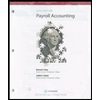
ADVANCED FIN. ACCT.(LL)-W/CONNECT
12th Edition
ISBN: 9781264582129
Author: Christensen
Publisher: MCG CUSTOM
expand_more
expand_more
format_list_bulleted
Question
Chapter 19, Problem 19.8.10E
To determine
Introduction: Temporarily restricted net assets refers to those assets on which certain restrictions are imposed by the donor regarding its usage, which after a certain period of time or after fulfillment of specified conditions shall be lifted. However, permanently restricted net assets are those assets which are restrictive in nature in the sense that it could be used only for the purposes specified by the donor and no other purpose.
The amount to be disclosed in the statement of activities under the classification of temporarily and permanently restricted net assets.
Expert Solution & Answer
Want to see the full answer?
Check out a sample textbook solution
Students have asked these similar questions
Please give me true answer this financial accounting question
Accurate Answer
Department B had 12,000 units in work in process that were 75% completed as to labor and overhead at the beginning of the period; 52,400 units of direct materials were added during the period; 48,000 units were completed during the period, and 9,500 units were 60% completed as to labor and overhead at the end of the period. All materials are added at the beginning of the process. The first-in, first-out method is used to cost inventories. The number of equivalent units of production for conversion costs for the period was ____ Units.
Chapter 19 Solutions
ADVANCED FIN. ACCT.(LL)-W/CONNECT
Ch. 19 - Prob. 19.1QCh. 19 - Prob. 19.2QCh. 19 - Prob. 19.3QCh. 19 - Prob. 19.4QCh. 19 - Prob. 19.5QCh. 19 - Prob. 19.6QCh. 19 - Prob. 19.7QCh. 19 - Prob. 19.8QCh. 19 - Prob. 19.9QCh. 19 - Prob. 19.10Q
Ch. 19 - Prob. 19.11QCh. 19 - Prob. 19.12QCh. 19 - Prob. 19.13QCh. 19 - Prob. 19.14QCh. 19 - Prob. 19.15QCh. 19 - Prob. 19.16QCh. 19 - Prob. 19.17QCh. 19 - Prob. 19.18QCh. 19 - Should a rotary club, an ONPO, report depreciation...Ch. 19 - Prob. 19.20QCh. 19 - Prob. 19.1CCh. 19 - Prob. 19.2CCh. 19 - Prob. 19.3CCh. 19 - Prob. 19.4CCh. 19 - Prob. 19.5CCh. 19 - Prob. 19.7CCh. 19 - Prob. 19.1.1ECh. 19 - Prob. 19.1.2ECh. 19 - Prob. 19.1.3ECh. 19 - Prob. 19.1.4ECh. 19 - Prob. 19.1.5ECh. 19 - Prob. 19.1.6ECh. 19 - Prob. 19.2.1ECh. 19 - Prob. 19.2.2ECh. 19 - Prob. 19.2.3ECh. 19 - Prob. 19.2.4ECh. 19 - Prob. 19.2.5ECh. 19 - Prob. 19.2.6ECh. 19 - Prob. 19.2.7ECh. 19 - Prob. 19.2.8ECh. 19 - Prob. 19.2.9ECh. 19 - Prob. 19.2.10ECh. 19 - Prob. 19.2.11ECh. 19 - Prob. 19.2.12ECh. 19 - Prob. 19.3ECh. 19 - Prob. 19.4ECh. 19 - Prob. 19.5.1ECh. 19 - Prob. 19.5.2ECh. 19 - Prob. 19.5.3ECh. 19 - Prob. 19.5.4ECh. 19 - Prob. 19.5.5ECh. 19 - Prob. 19.5.6ECh. 19 - Prob. 19.5.7ECh. 19 - Prob. 19.5.8ECh. 19 - Prob. 19.5.9ECh. 19 - Prob. 19.6ECh. 19 - Prob. 19.7ECh. 19 - Prob. 19.8.1ECh. 19 - Prob. 19.8.2ECh. 19 - Prob. 19.8.3ECh. 19 - Prob. 19.8.4ECh. 19 - Prob. 19.8.5ECh. 19 - Prob. 19.8.6ECh. 19 - Prob. 19.8.7ECh. 19 - Prob. 19.8.8ECh. 19 - Prob. 19.8.9ECh. 19 - Prob. 19.8.10ECh. 19 - Prob. 19.9ECh. 19 - Prob. 19.10PCh. 19 - Prob. 19.11PCh. 19 - Prob. 19.12PCh. 19 - Prob. 19.13PCh. 19 - Prob. 19.14PCh. 19 - Prob. 19.15PCh. 19 - Prob. 19.16PCh. 19 - Prob. 19.17PCh. 19 - Prob. 19.18PCh. 19 - Prob. 19.19PCh. 19 - Prob. 19.20PCh. 19 - Prob. 19.21PCh. 19 - Prob. 19.22PCh. 19 - Prob. 19.23PCh. 19 - Prob. 19.24.1PCh. 19 - Prob. 19.24.2PCh. 19 - Prob. 19.24.3PCh. 19 - Prob. 19.24.4PCh. 19 - Prob. 19.24.5PCh. 19 - Prob. 19.24.6PCh. 19 - Prob. 19.24.7PCh. 19 - Prob. 19.24.8PCh. 19 - Prob. 19.24.9PCh. 19 - Prob. 19.24.10PCh. 19 - Prob. 19.24.11PCh. 19 - Prob. 19.24.12PCh. 19 - Prob. 19.24.13PCh. 19 - Prob. 19.24.14PCh. 19 - Prob. 19.24.15PCh. 19 - Prob. 19.24.16PCh. 19 - Prob. 19.24.17PCh. 19 - Prob. 19.24.18PCh. 19 - Prob. 19.24.19PCh. 19 - Prob. 19.24.20PCh. 19 - Prob. 19.25PCh. 19 - Prob. 19.26P
Knowledge Booster
Similar questions
- Can you help me solve this general accounting problem with the correct methodology?arrow_forwardPlease explain the correct approach for solving this general accounting question.arrow_forwardI am looking for the correct answer to this financial accounting question with appropriate explanations.arrow_forward
- Want Answerarrow_forwardPlease help me solve this general accounting question using the right accounting principles.arrow_forwardAt the beginning of the year, Anna began a calendar-year business and placed in service the following assets during the year: Asset Date Acquired Cost Basis Computers 1/30 $ 28,000 Office desks 2/15 $ 32,000 Machinery 7/25 $ 75,000 Office building 8/13 $ 400,000 Assuming Anna does not elect §179 expensing and elects not to use bonus depreciation, answer the following questions: (Use MACRS Table 1, Table 2, Table 3, Table 4 and Table 5.) Note: Do not round intermediate calculations. b. What is Anna's year 2 cost recovery for each asset?arrow_forward
- Hilton Lifts Co. manufactures industrial cranes. During the year, Harper purchased $1,420,000 of direct materials and placed $1,490,000 worth of direct materials into production. Hilton's beginning balance in the Materials Inventory account was $390,000. What is the ending balance in Hilton's Materials Inventory account?arrow_forwardGeneral accountingarrow_forwardDuring FY 2023 Fendi Manufacturing had total manufacturing costs of $532,000. Their cost of goods manufactured for the year was $495,000. The January 1, 2024 balance of Work-in-Process Inventory is $78,000. Use this information to determine the dollar amount of the FY 2023 beginning Work-in-Process Inventory.arrow_forward
- Can you help me solve this general accounting question using valid accounting techniques?arrow_forwardPlease provide the solution to this general accounting question using proper accounting principles.arrow_forwardI need assistance with this financial accounting question using appropriate principles.arrow_forward
arrow_back_ios
SEE MORE QUESTIONS
arrow_forward_ios
Recommended textbooks for you
- Century 21 Accounting Multicolumn JournalAccountingISBN:9781337679503Author:GilbertsonPublisher:CengagePrinciples of Accounting Volume 1AccountingISBN:9781947172685Author:OpenStaxPublisher:OpenStax College
 College Accounting, Chapters 1-27AccountingISBN:9781337794756Author:HEINTZ, James A.Publisher:Cengage Learning,
College Accounting, Chapters 1-27AccountingISBN:9781337794756Author:HEINTZ, James A.Publisher:Cengage Learning, 
 Pkg Acc Infor Systems MS VISIO CDFinanceISBN:9781133935940Author:Ulric J. GelinasPublisher:CENGAGE L
Pkg Acc Infor Systems MS VISIO CDFinanceISBN:9781133935940Author:Ulric J. GelinasPublisher:CENGAGE L Intermediate Accounting: Reporting And AnalysisAccountingISBN:9781337788281Author:James M. Wahlen, Jefferson P. Jones, Donald PagachPublisher:Cengage Learning
Intermediate Accounting: Reporting And AnalysisAccountingISBN:9781337788281Author:James M. Wahlen, Jefferson P. Jones, Donald PagachPublisher:Cengage Learning

Century 21 Accounting Multicolumn Journal
Accounting
ISBN:9781337679503
Author:Gilbertson
Publisher:Cengage

Principles of Accounting Volume 1
Accounting
ISBN:9781947172685
Author:OpenStax
Publisher:OpenStax College

College Accounting, Chapters 1-27
Accounting
ISBN:9781337794756
Author:HEINTZ, James A.
Publisher:Cengage Learning,


Pkg Acc Infor Systems MS VISIO CD
Finance
ISBN:9781133935940
Author:Ulric J. Gelinas
Publisher:CENGAGE L

Intermediate Accounting: Reporting And Analysis
Accounting
ISBN:9781337788281
Author:James M. Wahlen, Jefferson P. Jones, Donald Pagach
Publisher:Cengage Learning